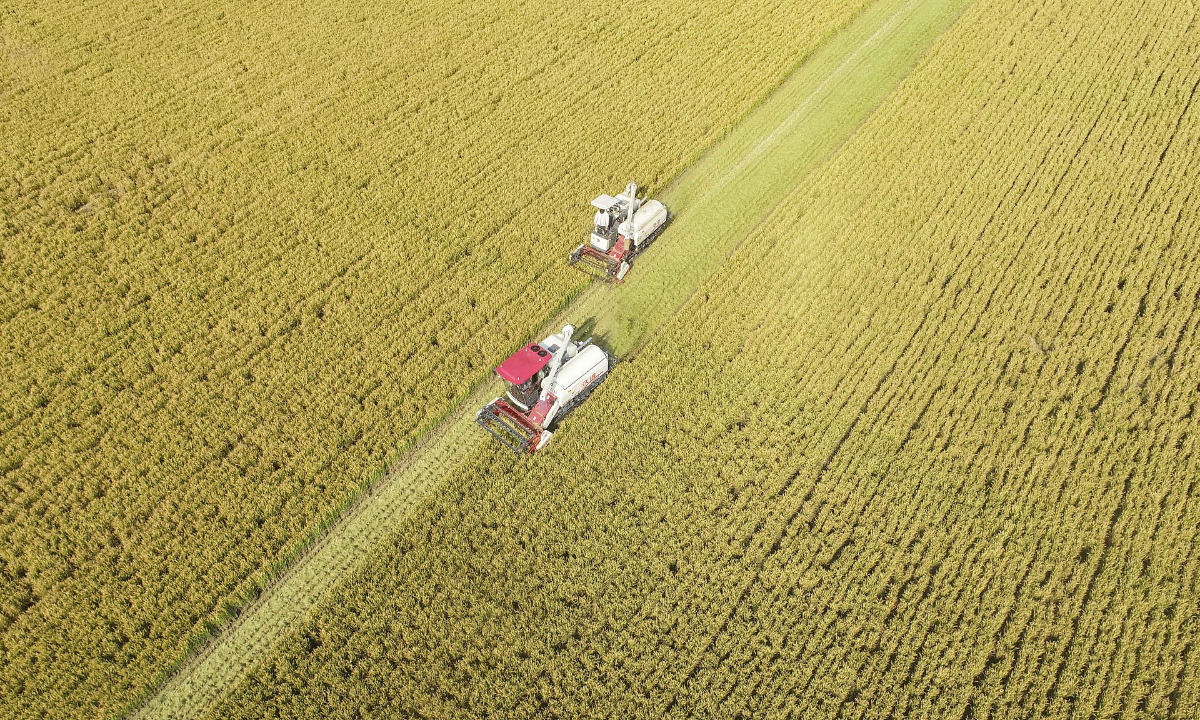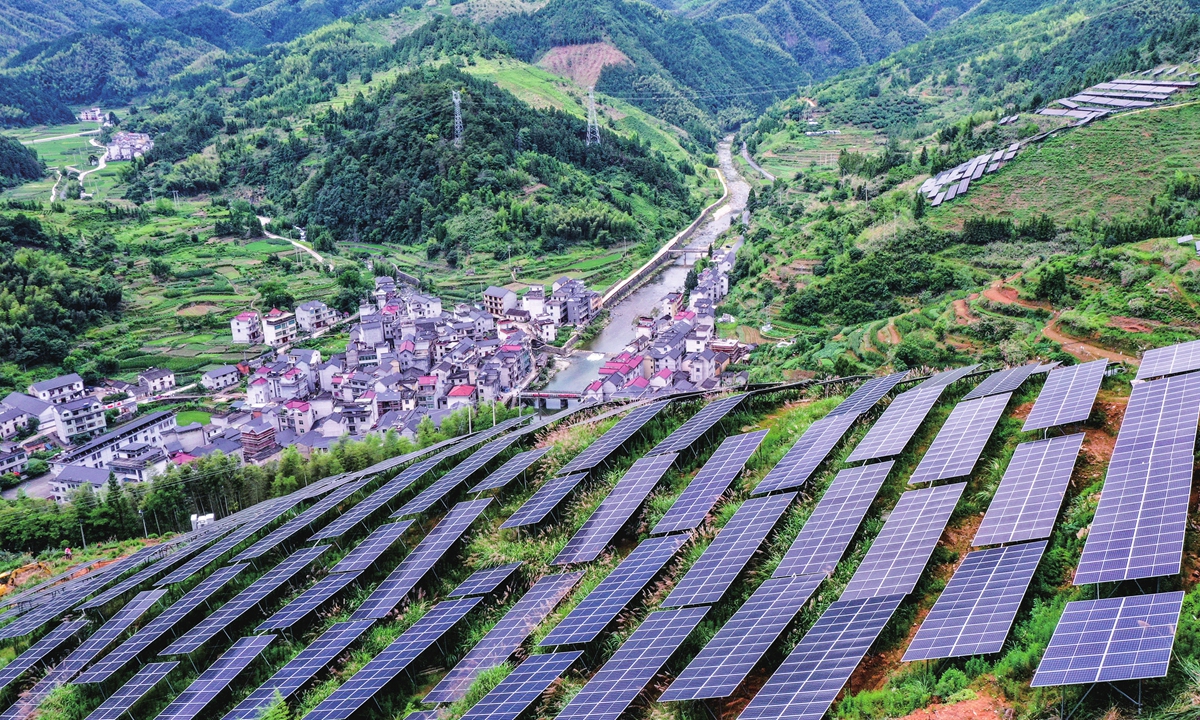
Farmers harvest rice with harvesting machineries in Huai'an, East China's Jiangsu Province. Photo:VCG

A centralized agriculture and photovoltaic complementary project is seen at a county in Hangzhou, East China's Zhejiang Province, on June 29, 2023. The county has been optimizing the energy structure, cultivating new momentum of rural economic growth, and driving local employment by developing resources and sectors which are complementary with the photovoltaic industry. Photo: cnsphoto



